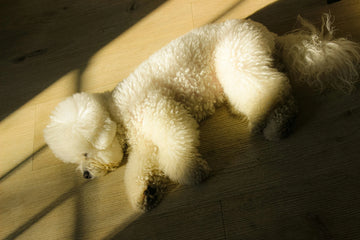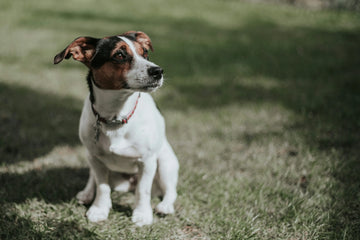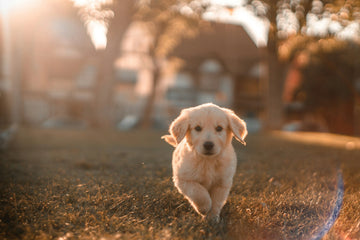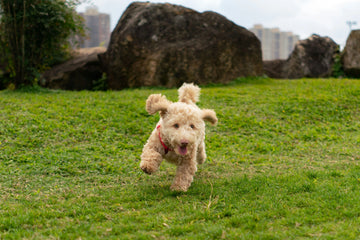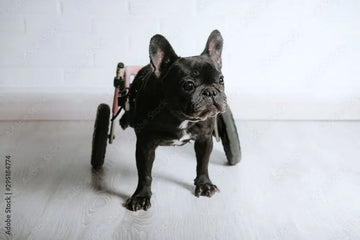When a beloved dog is diagnosed with a torn ACL, many owners feel anxious and uncertain. Will their pet be able to walk normally again? Is surgery the only way forward? A torn ACL in dogs is a significant injury, but it doesn’t necessarily mean the end of an active, happy life. With the right care—whether surgical or non-surgical—many dogs make a strong recovery. This guide will help you understand the condition, common symptoms, and the pros and cons of different treatment approaches.

I. What Is a Torn ACL in Dogs?
In veterinary medicine, the ACL is called the cranial cruciate ligament (CCL). It sits inside the knee joint, connecting the femur (thigh bone) to the tibia (shin bone) and keeping the joint stable during movement. When it tears, the knee becomes unstable, causing pain and difficulty walking. If left untreated, joint instability often leads to arthritis.
The VCA Animal Hospitals explain that untreated ligament injuries in dogs nearly always result in long-term joint damage.
II. Why Does It Happen?
A torn ACL in dogs can occur suddenly—such as during a sharp turn while running or a jump from furniture—or gradually, as the ligament weakens over time. Large breeds, overweight dogs, and breeds with steep knee angles (like Labrador Retrievers, Golden Retrievers, and Rottweilers) are more at risk.
Common causes:
-Sudden twisting or jumping.
-Gradual ligament degeneration with age.
-Excess body weight putting stress on joints.
-Structural knee differences in certain breeds.

III. Signs and Symptoms of a Torn ACL in Dogs
If your dog suddenly avoids putting weight on one back leg or sits down after only a few steps, it may be a sign of a torn ACL. Acute tears often cause immediate lameness, with the dog holding the injured leg off the ground. Partial or chronic tears may start with mild limping that worsens over time.
The American Kennel Club lists these as typical signs:
-Limping or holding up one back leg.
-Swelling around the knee.
-Hesitation or pain when rising or jumping.
-Muscle loss in the affected leg.
-Shifting body weight to the other leg.

IV. Surgery vs. Non-Surgical Treatment – Pros and Cons
When it comes to a torn ACL in dogs, surgery is not the only path. The best choice depends on your dog’s size, age, activity level, and overall health.
Benefits of surgery:
-Often restores knee stability quickly in large, active dogs.
-Shorter recovery time, reducing risk of further injury.
-Better long-term results in cases of complete ligament rupture.
Drawbacks of surgery:
-High cost (often several thousand pounds).
-Requires general anesthesia, which can be risky for older dogs.
-Arthritis may still develop later in life.
Benefits of non-surgical treatment:
-Safer for senior dogs or those who cannot undergo anesthesia.
-Lower cost; can be combined with knee braces, rehab therapy, and weight management.
-Avoids surgical trauma; recovery is more gradual.
Drawbacks of non-surgical treatment:
-Longer recovery period (months rather than weeks).
-Requires consistent owner involvement and strict activity control.
-Less effective for large, energetic dogs.
V. Example Timeline for Non-Surgical Recovery
Conservative treatment focuses on reducing pain, maintaining joint mobility, and building muscle strength to support the knee. Recovery is gradual and requires patience.
Typical progression:
-
Weeks 1–2: Short, controlled walks plus pain management.
-
Weeks 3–6: Increase walk duration and add light rehab exercises.
-
Weeks 7–12: Low-impact activities like underwater treadmill or gentle hill walking.
-
After 12 weeks: Gradually resume normal activities if stability is restored.

VI. Home Care Tips
A safe home environment can make a big difference during recovery:
-Use non-slip rugs or mats on smooth floors.
-Install ramps instead of stairs where possible.
-Provide a supportive bed for joint comfort.
-Keep food and water bowls at a comfortable height.
-Always use a lead outdoors to prevent sudden running.
Q&A – Common Questions About Torn ACL in Dogs
Q1: Can a torn ACL in dogs heal on its own?
In some cases of partial or minor tears, dogs can improve with strict activity restriction, weight management, and supportive aids. However, a complete tear usually requires more intervention, as long-term joint instability can lead to severe arthritis.
Q2: How long does non-surgical treatment take?
Conservative management often takes 3–6 months to see significant improvement, and owners must be committed to ongoing rehabilitation exercises and careful environmental control.
Q3: Will a torn ACL in dogs affect the other leg?
Yes. Because the injured leg bears less weight, the other healthy leg takes on more load, increasing the risk of secondary injury. This is one reason why controlled activity is so important during recovery.
Q4: Should I use a brace or wheelchair during recovery?
In many cases, a knee brace, lift harness, or dog wheelchair can help reduce the load on the injured leg, allowing your dog to remain active during recovery while lowering the risk of further injury.
A torn ACL in dogs is a serious injury, but with timely action and consistent care, many dogs regain mobility and enjoy a good quality of life. Whether you choose surgery or conservative management, your patience and dedication will be the foundation of your dog’s recovery.
This article is for informational purposes only and is not a substitute for professional veterinary advice.

